Rhetorical and literary devices have been around since the time of ancient Greece, and they haven’t changed much since the Greeks identified and named them. Neither has human nature.
These “devices” are the way human beings use language to express ideas and meaning in spoken and written words. Literary devices help us communicate thoughts with imagination and artistic flair; rhetoric appeals to logic (logos), emotion (pathos), ethics (ethos) and finally to time (kairos).
A person doesn’t need to be an academic scholar to understand and use them. We all employ them in everyday life.
As writers, it is our job to know and use these powerful tools to communicate our stories, to capture readers’ attention and hold them in thrall, to make them cry or laugh. We do a good job at it, but sometimes “terminology” gets in the way. Authors may know how to use devices, but aren’t always sure what to call them … or maybe I’m the only one who gets confused.
Let’s meet part of the Device Family. These are only a few, but the most important of hundreds.
● Figure of Speech
A Figure of Speech is a distinctive spoken or written expression; a word or phrase that departs from straight-forward, literal language. Richard Norquist writes “A figure of speech is a rhetorical device that achieves a special effect by using words in a distinctive way.” https://www.thoughtco.com/top-figures-of-speech-1691818
They are also referred to as figures of rhetoric, figures of style, rhetorical figures, figurative language, and schemes. Too many names may be part of the confusion.
Figures of speech are figurative language. Literal language explains exactly what it meant. Figures of speech are imaginative and indirect, using a comparison of concepts to more familiar objects or ideas. Usually, figures of speech are classified in five categories, although Norquist indicates there are hundreds and lists twenty of the most common. I’ll stick to a smaller number.
Photo Source: https://penlighten.com/hyperbole-examples
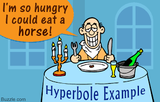
Hyperbole overstates, emphasizes, or exaggerates a concept to emphasize or make a point and are descriptions are not intended to be taken literally.
Photo source: Clipart Library.com

Symbols are images with non-literal meanings; they stand for something other than what they seem to be on the surface, such as a heart as a symbol for love.
Poetry and creative writing make extensive use of symbolism. Yourdictionary.com uses an example from William Blake’s Ah Sunflower where the author refers to life cycle and uses sunflowers to represent humankind and how they desire everlasting life. “Ah Sunflower, weary of time, Who countest the steps of the sun; Seeking after that sweet golden clime Where the traveler's journey is done.”
Photo Source: K5learning.com ▪Simile
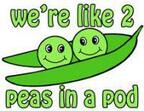
If the phrase includes the words “like,” “as,” “than,” or “resembles” for comparison purposes, then the phrase is a simile. Example: Happy as a clam.
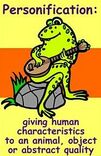
Personification treats animals and inanimate objects as if they were human with human characteristics. The use of personification allows readers to relate to animals and objects as they imagine them reacting or feeling the way a human would; transfers a human emotion to something that is non-living. Yourdictionary.com uses the following examples of personification.
“The stars danced playfully in the moonlit sky.”
“The first rays of morning tiptoed through the meadow.” Photo source: Clipart Library.com
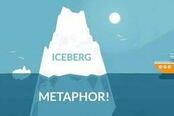
A Metaphor states that one thing is another thing. In metaphors the meaning is not literal, but the first thing mentioned shares common characteristics with the second. With metaphors, words or phrases that are ordinarily applied to one thing are applied to something you wouldn't necessarily pair it with.
Two metaphors in the same sentence (mixed metaphors) can create confusion. A metaphor does not contain the words “like” or “as.” Examples from Yourdictionary.com include:
“He broke my heart. - Your heart isn't literally broken; you're just feeling hurt and sad.”
"You light up my life. - Of course, no one can provide physical light. This expression is simply saying that someone brings them joy.”

The repetition of the beginning consonant sounds of neighboring words.
Example: "She sells seashells by the sea-shore."

A mild, indirect, or vague term that often substitutes a harsh, blunt, unpleasant, or offensive term. Examples: “Passed away - instead of died; Put to sleep - instead of euthanized; Whacked - instead of murdered.”
▼Photo source: commongunsense.me/the-irony-gun-lobby-logic
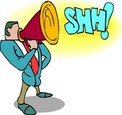
Irony occurs when there's a marked contrast between what is said and what is meant, or between appearance and reality. Sarcasm is an extreme form of irony, but in addition implies a little bit of a mean twist or a derogatory statement. In their purest form, that's a good way to distinguish the two whenever you're uncertain. Examples of verbal irony:
Saying, "Oh, fantastic!" when the situation is actually very poor
Saying something confusing is “...as clear as mud.”
A food critic telling the chef, "Your steak was as tender as a leather boot."
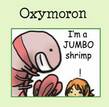
Two contradictory terms used together. In fact, the word itself is an “oxymoron.” “Oxy” is Greek for "sharp" and "moron" means "dull".

Occurs when a part is represented by the whole or, conversely, the whole is represented by the part. Example: “Do you like my new wheels?” = “Do you like my new car?”
Here endeth the Figures of Speech. Let's go on to other Rhetorical and Literary Devices.
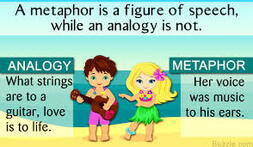
An Analogy is a comparison of two things to show their similarities. Sometimes the things being compared are quite similar, but other times they could be very different. Nevertheless, an analogy explains one thing in terms of another to highlight the ways in which they are alike. A comparison of two otherwise unlike things based on resemblance of a particular aspect(s) or similarity, typically used for the purpose of explanation or clarification.
An analogy is also an inference that if two or more things agree with one another in some respects they will probably agree in others. The implication of likeness is in relationships, rather than appearance or qualities, such as an analogy of seasons of the year as compared to the stages of life.
We all make comparisons in speech and writing, and as you have seen similes and metaphors, both figures of speech, also make comparison, but in a specific manner. Analogies are not figures of speech because they are more like a logical argument. Examples given by Your Dictionary: https://examples.yourdictionary.com/analogy-ex.html
“▪Finding a good man is like finding a needle in a haystack: Finding a small needle in a pile of hay takes a long time, so the task at hand is likely to be hard and tedious.
▪That's as useful as rearranging deck chairs on the Titanic: It looks like you're doing
something helpful but really it will make no difference in the end.

A Turn of Phrase is an expression worded in a distinctive way, especially one which is particularly memorable or artful; a manner of expression; spoken or written expression; a way of saying something. The following examples are from Wikipedia.
A Turn of Phrase may be a Figure of Speech, but not necessarily.
▼ Photo source: www.cdouloff.com/hosting
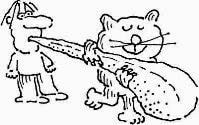
A group of words established by common usage as having a meaning not logically deducible from those of the individual words (e.g., raining cats and dogs, see the light). It doesn’t mean what the words say.
It can also be the grammatical or structural usage of a language that is peculiar to itself either grammatically (such as no, it wasn't me) or in having a meaning that cannot be derived from the conjoined meanings of its elements (such as ride herd on for "supervise")
Examples: http://www.scholastic.com/printables/promosite/pdfs/0439237785_e039.pdf
“▪ We’re in hot water. – We’re in trouble.
▪ We don’t see eye to eye. – We don’t agree.
▪ It’s no skin off my nose. – I don’t care, because it doesn’t affect me.
▪ The cat has your tongue. – You can’t say anything"
● Expression
An expression is the process of making known one's thoughts or feelings; the act, process, or instance of representing those thoughts and feelings in a medium, such as words. Symbolism.
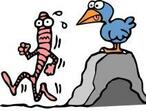
A well known and wise saying or short statement expressing a general truth that has become widely accepted as a general truth and reflection of life. They are pithy and philosophical. Examples: ▪The early bird catches the worm.
▪ A penny saved is a penny earned. ▪ Eat to live, and not live to eat."
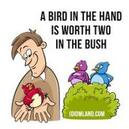
An opinion-based, concise statement accepted for truth, short and often witty. Aphorisms are considered to be definitions or concise statements of a principle, a matter-of-fact sentiment, and generally accepted as truth. Examples: ▪ A bad penny always turns up.
▪ A barking dog never bites. ▪ A bird in the hand is worth two in the bush.
Photo source: twitter.com/idiomland/status

A phrase or short sentence that expresses ideas well-known by many people, words of wisdom, truth, or morality based on common sense and practical experience; a basic truth or rule of conduct which should be followed by all. Examples:
▪ Laugh and the world laughs with you, weep and you weep alone.
▪ Money doesn’t grow on trees. ▪ Early to bed and early to rise, makes a man healthy, wealthy and wise.

Every example here qualifies as being a cliché. Now you’re telling me these are all perfectly acceptable literary devices? I can use a metaphor but I should avoid clichés like the plague? No wonder I’m confused.
MEET YOUR UNFRIENDLY NEIGHBORS, THE CLICHÉS
“▪ A phrase or opinion that is overused and betrays a lack of original thought.
▪ A very predictable or unoriginal thing or person
▪ A stereotype or electrotype”
●Merriam Webster
“▪ A trite phrase or expression also: the idea expressed by it.
▪ A hackneyed theme, characterization, or situation.
▪ Something (such as a menu item) that has become overly familiar or commonplace.”
●Stephen Wilbers
“▪ A phrase or expression used so frequently that it has become trite and tedious.”
●Grammar Monster
“▪ An overused and worn-out expression used to convey a popular thought or idea.”
Okay, okay! I get it. A cliché is an action, opinion, thought, story plot, phrase, event, fashion statement, name – pretty much anything -- that has been overused to the extent that it loses both the original/ true meaning and its novelty, becoming very predictable and boring.
However, frequent use of a word in writing and speaking is one of the major requirements for a word or phrase to be included in the dictionary. We can thank modern communication technology and the rate of change in our society for speeding up the process to the point that by the time a word or phrase is used commonly enough to put in the dictionary, it has become a cliché. Just sayin’.
Because these phrases are used often, everyone understands what they mean in the current context. The original meaning may not be the same, but they say something true about the world we live in. Something about the human experience, something enduring. That is, perhaps, why they may outlive the original meaning. They are clichés for a reason. In fact, some words have been saved from extinction primarily because they were imbedded in a lasting adage, proverb, or idiom. In the 21st century, we probably wouldn’t say we wend our way to through the park. We would say “We went through the park.”
Here’s another problem: A phrase that is familiar and boring to one person may be different for someone else.
YA GOTTA KNOW WHEN TO CHOOSE’EM; KNOW WHEN TO LOSE’EM
Relax! Hopefully, humanity won’t be facing any more plagues, and the Cliché Police won’t arrest you if you use one. All of us use them, particularly in speech.
Is Nothing Simple?
There are two types of clichés: figurative and literal.
● Literal cliché = A common overused phrase which can be translated literally.
“All’s well that ends well,” means exactly what it says.
● Figurative cliché = A common overused phrase which, if translated in any other language, they will not make any sense at all. “It’s raining cats and dogs,” if translated, wouldn’t make any sense. P.S. It doesn’t mean anything in English, either.
Really! These need separate names? Oh, come on.
When To Use Them
Leslie Jamison writes that “Clichés lend structure and ritual and glue: They are the subterranean passageways connecting one life to another … They allow us to look outward, to recognize the ordinariness of our experience, to understand the resonances between our own lives and the lives of others. They privilege commonality over singular self-expression. They humble us toward one another.” https://www.nytimes.com/2015/01/11/books/review/why-do-we-hate-clich.html
That’s a big job for a little cliché. I’m not sure I agree with all of it, but I do understand how clichés can connect our lives. In my opinion, the use of clichés in our writing is all right if it is thoughtful and there for a purpose:
● When they make sense and aren’t easily misunderstood.
● When you want to be in sync with readers who use the same language style.
● In dialogue, when that is the way your character(s) speak.
● When their use can make a complex topic easier to understand.
● When you want to befuddle a foreign listener who doesn’t speak much English.
● When you can give it a little twist to make it more imaginative.
Leah McClellan say, “Seriously, people. Don’t worry about them too much. The cliché naysayers are clichés themselves and fit right in with the grammar Nazis.”
When To Lose Them
Clichés are general and lacking in specificity and complexity; thus their appeal and acceptance to a wide range of people. For the same reason, they do not make memorable or profound contributions to your writing. They are thought of as “bad” because they imply no thought was given to them. They don’t represent any original thinking or imagination.
Readers skip over them. So, if you are writing about something you feel is important, you don’t want the reader to be blind to your words. If they don‘t see your clichés, they won’t see the rest of the text. Lose the clichés because they:
● Make you seem boring. By using a cliché, you’re telling your reader that you lack originality, making them want to yawn and stop reading your book.
● Make your writing interchangeable with anybody else’s.
● Are vague. Specific details and explanations make better evidence than generalizations and trite phrases.
● Give the appearance of laziness and avoiding creative work.
● Make the author lose credibility. Your reader will not trust you as an authoritative source if you can’t come up with a better description than a cliché.
● Are poor substitutes for actual evidence, and are not strong commentary for making a point.
Clichés work against an author when they replace the writer’s own voice and message and supplant our thoughts.
THE REVELATION
The big news is that a cliché is not a part of speech or a literary device. Any words, concept, idea, etc. used too often becomes cliché. Any of the figures of speech or literary and rhetorical devices can be a cliché; anything can. Fashion, ideas, words, actions, colors … you name it.
Just as you look for inappropriate clichés in your writing, you should look for them in your characters and plot as well.□
Sources:
https://www.thoughtco.com/top-figures-of-speech-1691818
https://penandthepad.com/list-five-types-figures-speech-8443530.html
http://www.idionconnection.com/proverbs.html
https://literarydevices.net/figure-of-speech/
http://www.literarydevices.com/symbolism/
http://learnersdictionary.com/qa/Idioms-metaphors-similes-and-hyperbole
https://www.britannica.com/art/figure-of-speech
https://examples.yourdictionary.com/examples-of-cliches.html
https://english.stackexchange.com/questions/28878/when-should-i-use-archaic-and-obsolete-words
https://www.merriam-webster.com
http://www.wilbers.com/FigurativeLanguage.htm
http://grammar.about.com/od/c/g/clicheterm.htm
http://grammar.about.com/od/qaaboutrhetoric/f/whatarecliches.htm
http://www.writersdigest.com/online-editor/12-cliches-all-writers-should-avoid
http://www.grammar-monster.com/glossary/cliches.htm
http://www.writersdigest.com/whats-new/10-tips-to-bypass-cliche-and-melodrama
https://tobiasmastgrave.wordpress.com/2011/08/18/what-is-a-cliche/
https://en.wiktionary.org/wiki/clich%C3%A9#Alternative_forms
https://www.nytimes.com/2015/01/11/books/review/why-do-we-hate-clich.html
http://writing2.richmond.edu/writing/wweb/cliche.html
http://www.be-a-better-writer.com/cliches.html
http://writingcenter.unc.edu/cliches/
http://examples.yourdictionary.com/examples-of-cliches.html
http://www.clichelist.net/
https://www.merriam-webster.com/help/faq-words-into-dictionary
https://literaryterms.net/cliche/
https://literaryterms.net/figures-of-speech/
https://literaryterms.net/how-to-write-an-aposiopesis/
https://literaryterms.net/trope/
https://literaryterms.net/figures-of-speech/
https://literaryterms.net/zeugma/
https://www.theguardian.com/science/the-lay-scientist/2015/mar/03/why-the-oed-are-right-to-purge-nature-from-the-dictionary
https://www.thoughtco.com/top-figures-of-speech-1691818
https://www.britannica.com/art/figure-of-speech
https://en.wikipedia.org/wiki/Rhetorical_device
https://www.virtualsalt.com/rhetoric.htm
http://udleditions.cast.org/craft_ld.html
https://knowyourphrase.com/raining-cats-and-dogs
http://simplewriting.org/why-cliches-can-be-good-for-your-writing/
http://www.be-a-better-writer.com/cliches.html
http://writingcenter.unc.edu/cliches/
https://unravellingmag.com/articles/euphemisms/
http://www.oogazone.com/2018/top-singing-clip-art-library/top-girl-singer-clipart-library/
https://www.topsimages.com/images/silly-cartoon-laughing-7e.htmlhttps://twitter.com/idiomland/status/1025013895692513281
http://www.cdouloff.com/hosting/99_kyunghwa/idiom3.html
https://lifebeyondthekitchen.com/creatively-crafty-link-party-153/
https://commongunsense.me/2015/04/28/the-irony-of-the-gun-lobby-logic/
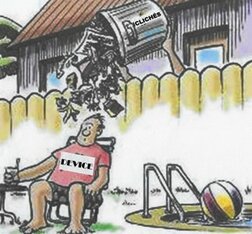




 RSS Feed
RSS Feed